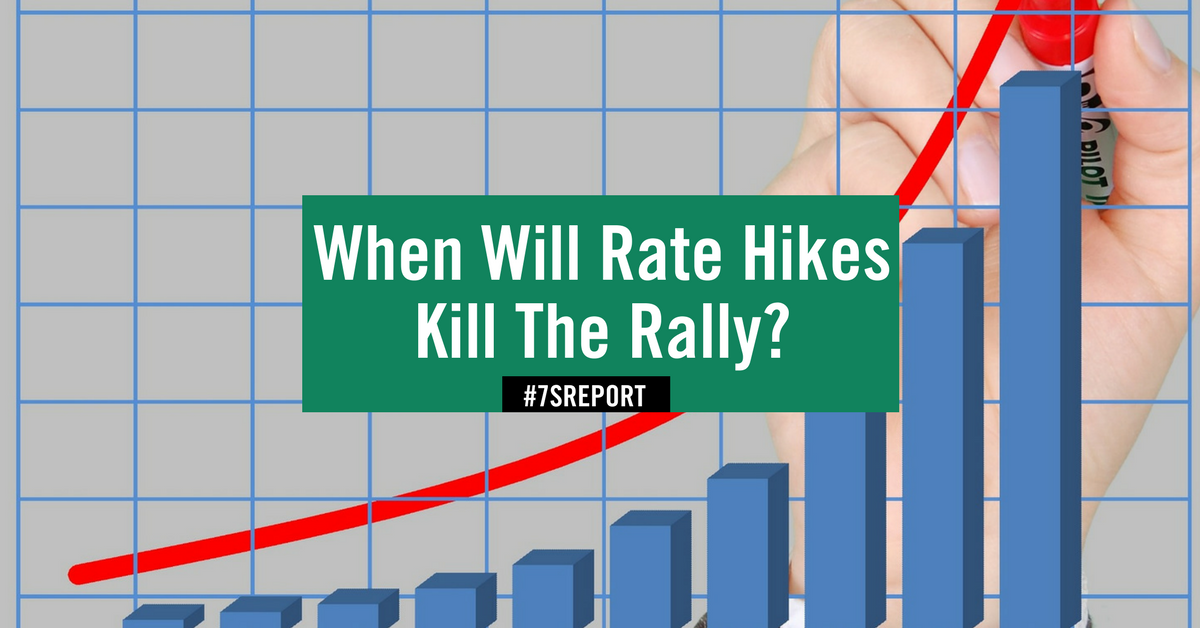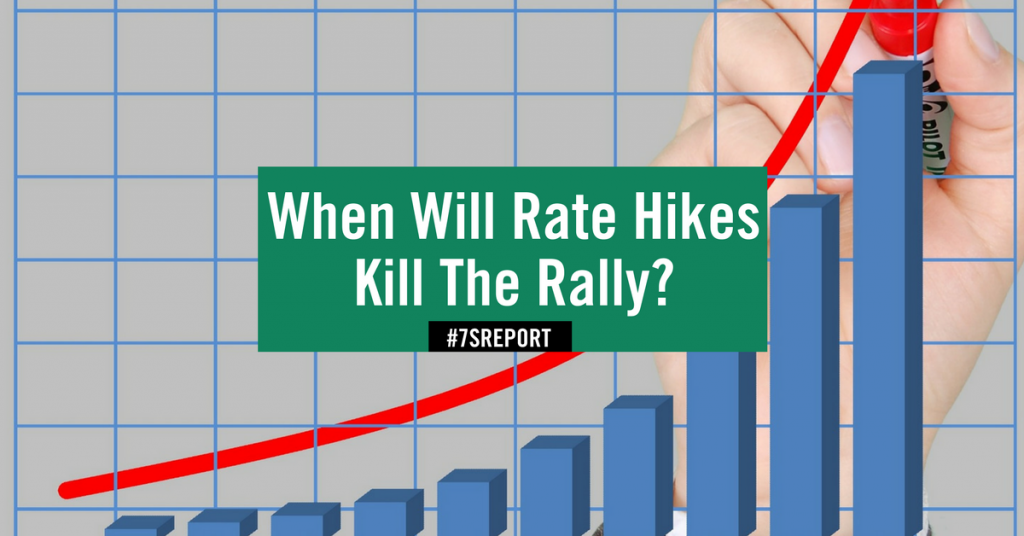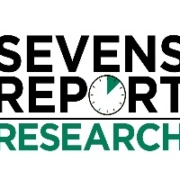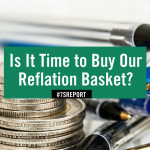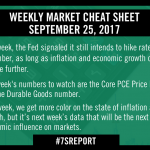When Will Rate Hikes Kill The Rally?
The Sevens Report is the daily market cheat sheet our subscribers use to keep up on markets, leading indicators, seize opportunities, avoid risks and get more assets. Get a free two-week trial with no obligation, just tell us where to send it.
When Will the Fed Kill the Bull Market? (Or, What is the Neutral Fed Funds Rate?)
A lot of clichés on Wall Street aren’t worth the paper they’re printed on, but one saying I have found to be quite accurate is: Bull Markets Don’t Die From Old Age. It’s the Fed that Kills Them.
At least over the last 20 years, that has largely proven true. The general script goes like this:
First, the Fed starts raising rates because financial conditions have become too easy (this should sound familiar). In this cycle, rate hikes began in December 2015 but importantly, they are starting to accelerate.
Second, those rate hikes cause the yield curve to invert. That happens as bond investors sell short-term Treasuries and send short-term yields higher (because the Fed is raising short-term rates), and buy longer-dated Treasuries, pushing those yields lower, because investors know the rate hikes will eventually cut off economic activity. In this cycle, the yield curve hasn’t inverted yet, but the 10s—2s Treasury yield spread has fallen from over 2% in late-2014 to fresh, multi-year lows at 0.77% (as of Sept. 5).
Third, the inversion of the yield curve is a loud-and-clear “last call” on the bull market. The rally doesn’t end when the curve inverts, but it’s a clear sign that the end is much closer to the beginning. In this cycle: We are not at that inversion step yet, although we are getting uncomfortably close.
Fourth, after the curve inverts, the Fed keeps hiking rates until economic momentum is halted. During the last two economic downturns (2001/2002 and 2008/2009) the Fed was able to hike rates to 6.5% and 5.25%, respectively, before effectively killing the bull market.
But just as the Fed continues to cut rates after the economy has bottomed, it also hikes rates after economic growth has stalled (because of the lag time between rate hikes and the effect on the economy).
So, it’s reasonable to assume the actual Fed Funds rate level which caused the slowdown/bear market is at least 25 to 50 basis points below those high yields, so 6% or 6.25% in ’01/’02 and 4.75% or 5% in ’08/’09.
In this cycle, the most important question we can ask is: At what level of rates does the Fed kill the expansion and the rally? That number, which the Fed calls the “neutral” Fed Funds rate is thought to be somewhere between 2.5% and 3% this time around (at least according to Fed projections).
However, we’ve never come out of a cycle where we’ve had:
1. Four separate rounds of QE
2. The maintaining of a multi-trillion dollar balance sheet
3. Eight-plus years of basically 0% interest rates
4. Eight-plus years of sub-3% GDP growth
So, common sense would tell us that this “neutral” Fed funds rate is going to be much, much lower than it’s been in the past.
How much lower remains the critical question (2.5%? 2.0%? 1.5?)
This is really important, because if the answer is 1.5%, we’re going to hit that early next year (it likely isn’t 1.5%, but it may not be much higher).
And, what impact will balance sheet reduction have on this neutral rate?
Again, common sense would tell us that balance sheet reduction makes the neutral rate lower than in the past, because balance sheet reduction is a form of policy tightening that will go on while rates are rising (so it’s a double tightening whammy).
There are two important takeaways from this analysis.
First, while clearly the tone of this analysis is cautious, it’s important to realize that the yield curve has not inverted yet, so we haven’t heard that definitive “last call” on the rally. And, just like at an actual last call, there’s still some time and momentum left afterwards, so an inverted curve is a signal to get ready to reduce exposure, not a signal to do so that minute.
Second, on a longer-term basis, if the Fed really is serious about hiking rates, then this bull market is coming to an end, and the risk is for it happening sooner rather than later. Because the level at which rate hikes cause a slowdown and kill the bull market is likely to be much, much lower than anything we’ve seen before (unless there is a big uptick in economic activity).
That is why I said yesterday that if the Fed is serious about consistently hiking rates going forward, that the “hourglass” may have finally been flipped on the bull run. So, while hitting that “Neutral” Fed funds rate Is hopefully at least a few quarters away (unless things are way worse than we think) it’s my job to watch for these types of tectonic shifts in the market so that we’re all prepared to act when the time is right. We will be watching this closely.
Cut through the noise and understand what’s truly driving markets, as this new political and economic reality evolves. The Sevens Report is the daily market cheat sheet our subscribers use to keep up on markets, seize opportunities, avoid risks and get more assets. Sign up for your free two-week trial today and see the difference 7 minutes can make.
